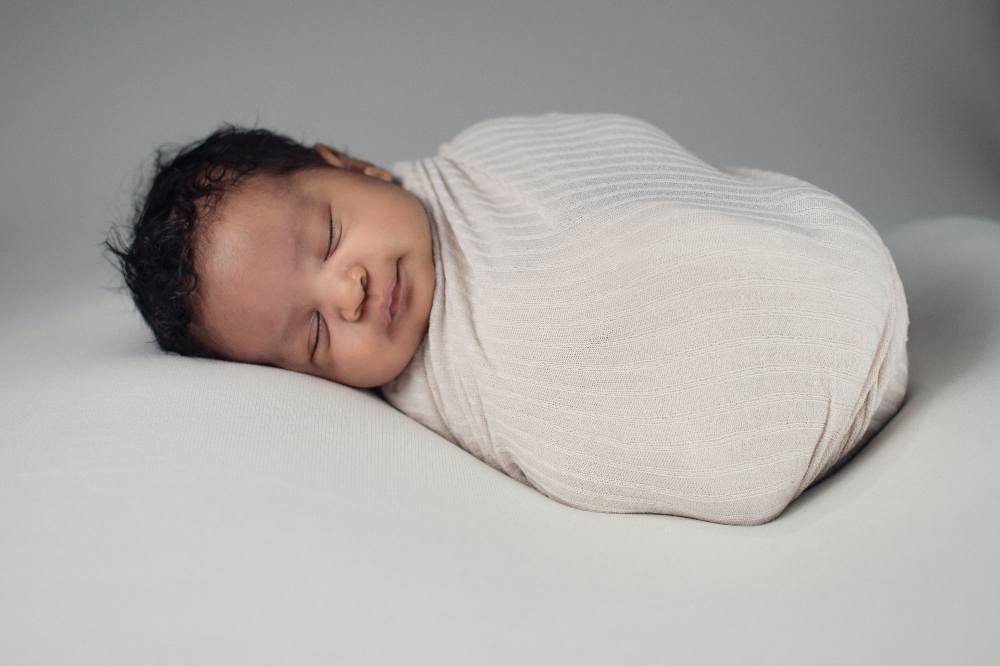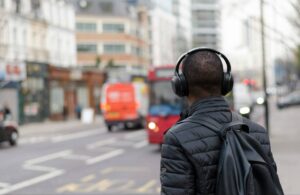Chin Priscilla
Estimated reading time: 30 minutes
Our inner child is a precious part of ourselves that requires healing if we’ve experienced childhood trauma or attachment injuries. As children, we were vulnerable and dependent on those around us to nurture us physically and emotionally. Childhood is a delicate time in our lives. Remember that time in your life? That part now lives on in you as your inner child. You may not be consciously aware of it, but it holds memories, hopes, dreams, and fears from your childhood.
How your childhood affects you:
During childhood, you form core ideas about who you are.
→ Did you feel valued or liked? Did your voice matter?
You also learned the “blueprints” for relationships. That is to say; you formed expectations for how others will treat you and how to connect with others.
For example,
→ Did you learn that others will only connect with you if you hide your needs and wants?
→ Did others convey that you are inherently unworthy unless you can ‘prove’ your value?
→ Did you learn to walk on eggshells with certain people because they could lash out at any moment?
These are just a few examples of the many ways someone could be affected by trauma. Childhood trauma can take so many forms.
If left unaddressed, our childhood traumas continue to live on within us adults as inner child wounds. Our wounded inner child will shape the decisions we make and the lives we live.
These wounds and attachment injuries influence our expectations and assumptions about ourselves, others, the world, and the possibilities in life. Nonetheless, these painful experiences and beliefs may not readily come to the surface in our conscious minds. Inner child work involves addressing unresolved childhood trauma so we can be empowered to live more freely and fully in the present.
What is childhood trauma?

Unhealed childhood trauma manifests as inner child wounds in adults.
So what is childhood trauma? Childhood trauma refers to difficult or scary experiences that are overwhelming, distressful, or painful and leads to lasting changes in the child’s mental, physical, social, emotional, and spiritual health.
Yet, not all overwhelming or life-threatening experiences are traumatic because each child interprets their unique experiences differently. Also, many external factors contribute to whether the event(s) had a traumatic impact and how severely the child is traumatized.
Here are some examples of external factors that can affect whether an event has a traumatic effect:
- Was there acknowledgment (or lack thereof) of the trauma by people surrounding the child?
- Did they receive any support after the experience?
- Did the child have a safe space to process the experience?
A life experience that is traumatic for one child might not be traumatic for another.
Common causes of childhood trauma resulting in inner child wounds
Racial Trauma
Racism is individual, systemic, and historical and has compounding and lasting effects.
Racial trauma can include:
- Exposure to stereotypes, discrimination, and prejudices – communicated explicitly or implicitly
- Witnessing your community or family experience racialized aggression and microaggressions
- Others gaslighting, minimizing, or denying your lived reality
Immigration Trauma
- Loss of identity and familiarity
- Lack of tools or resources to cope in a new environment. This can be because of language barriers, financial limitations, limited knowledge about how the system works, so on.
- Violence, assault, loss of family members
- Separation from loved ones and the support system in the country of origin
- Read more about immigration trauma here.
Intergenerational trauma
When these traumatic events take place and there aren’t proper mental, emotional, or financial resources to address and heal the trauma, these wounds are unconsciously transmitted to us as well.
Read more about intergenerational inner child wounds here.
Read more about intergenerational trauma here.
Relational Trauma or Emotional Trauma
- Emotional abuse: yelling, gaslighting, lack of privacy, insults, threats, and so on
- Taking on roles (emotional or physical caretaking) as a child that you were too young to handle
- Physical or emotional absence of caregivers
- Betrayal, rejection, or blame, especially by important people in your life
- Chaos, instability, or dysfunction in the house (such as domestic violence, a family member with a mental illness, substance abuse or incarceration)
- Exposure to or witnessing domestic violence
- Separation from a parent or caregiver
- Death/illnesses of loved ones
- Bullying/cyberbullying
Physical Trauma
- Physical abuse
- Sudden and/or serious medical condition
- Violence or physical aggression (at home, at school, or in the surrounding community)
- War/terrorism
- Exposure to domestic violence (physical, emotional, or sexual violence)
Sexual trauma
Sexual abuse includes any inappropriate behavior or psychological manipulation intended to give the perpetrator some level of sexual gratification.
The behavior could involve physical touch or forcing someone to perform sexual acts.
In addition, it can also involve psychological coercion of the victim to view sexual images, take nude photos, and engage in whatever is sexually gratifying to the perpetrator.
Signs you have inner child wounds or attachment injuries
Fear of abandonment - emotional abandonment and/or physical abandonment
- It’s hard to be alone.
You’re always going to social events. You’re a serial dater. You know you’re tired, but you can’t seem to stop.
- Codependency in friendships or relationships
- Low self-esteem
- Need for excessive validation that others will not leave
- Fear of being a burden or a bother
- Social anxiety and avoidance – if you don’t put yourself out there and don’t get attached to people you can protect yourself from rejection
- Being a people-pleaser:
You say ‘yes’ to more than you can handle because you fear disappointing or upsetting others.
- Conflict avoidance:
You’re scared to share opinions, thoughts, or feelings that are different from those of others.


- Hyper-independence:
You have a hard time relying on others.
- Fear of being hurt, betrayed, or lashed out at
- Being rigid and perfectionistic
You’re chronically overworking and overachieving.
- Need constant confirmation that others will be there for you
- You question others’ intentions:
“What if they’re just kind because they want something from me? ” or “If I accepted help from them, I’d be indebted to them and ‘owe’ them something.”
You easily feel guilty
- Unrealistic sense of responsibility:
You feel responsible for others’ emotions and end up being the caretaker to those around you
- You feel guilt for situations beyond your control or negative outcomes due to others’ choices.
- You feel bad for setting boundaries.
- Fear of others’ dependence on you:
“I feel uneasy when others start opening up to me. What if they depend on me too much, and I can’t leave?”
- It’s hard to be alone.
You’re always going to social events. You’re a serial dater. You know you’re tired, but you can’t seem to stop.
- Codependency in friendships or relationships
- Low self-esteem
- Need for excessive validation that others will not leave
- Fear of being a burden or a bother
- Social anxiety and avoidance – if you don’t put yourself out there and don’t get attached to people you can protect yourself from rejection
- Being a people-pleaser:
You say ‘yes’ to more than you can handle because you fear disappointing or upsetting others.
- Conflict avoidance:
You’re scared to share opinions, thoughts, or feelings that are different from those of others.
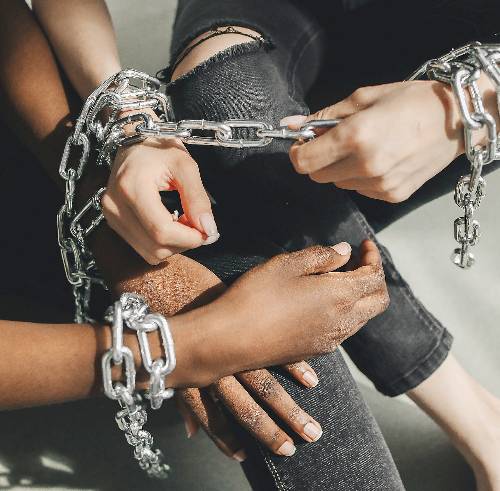

- You’re cut off or dissociated from your feelings
- Inability to see your feelings and needs as valid:
“I should be over this by now,” or “There’s no reason for me to feel this way.”
- You don’t expect that others will hear you out or take you seriously when you speak up about something
- Shame for expressing emotions
- Feeling hollow or empty inside
- Addictive behaviors to food, social media, shopping, relationships, alcohol, and so on to numb the feelings
- You overachieve at the expense of your emotional and physical well-being
- You underachieve because fears and insecurities hold you back
- Self-sabotage as a form of rebellion
RECOGNIZE ANY OF THESE SIGNS IN YOURSELF?
Take the next step towards healing.
Schedule a consultation with our vetted therapists who specialize in inner child work.
- Limited weekday evenings available right now for DC, NY & NJ
- FREE 15 minute consultation
- In-depth therapy that addresses more than just symptoms
- Trained in Evidence-Based Practices
Unhealed Inner Child Wounds in adult relationships - 10 signs of unresolved childhood trauma
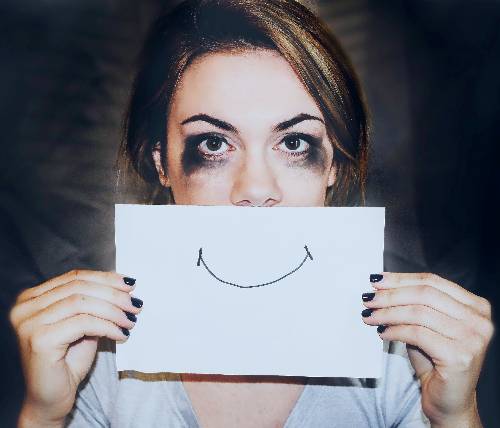
(1) You feel like you’re walking on eggshells
You expect people to lash out at you or berate you at any moment. You’re afraid to upset people.
(2) You feel like a burden
You worry you’ll drive others away if you express your needs and wants. What if they start seeing you as a burden or a bother? If they knew what you’re ‘really’ about, they’d think it’s too much.
(3) It’s hard to set boundaries
You say “yes” to so many plans, phone calls, favors, etc., that you’re drained by the end of the week, but it’s hard to say no… What if you miss out? What if you let someone down? What if they get hurt because you couldn’t do something for them?
(4) Ongoing self-criticism
You find all sorts of ways to beat yourself up. You can have so much empathy for friends, but sympathy goes out the door for yourself.
(5) Excessive guilt
You feel responsible when things go wrong, even if many factors are not in your control. You feel as if you’re hurting others when you prioritize yourself.
(6) People pleasing
You’re hyperaware of others’ needs and wants because then you know what to give them or who to be to keep them in your life. You go the extra mile to avoid disappointing or upsetting others. Sometimes, you accommodate and please others without showing who you are.
(7) Hyper-independence
It’s hard to lean on others. Maybe you were let down when you needed people as a child, so you learned to rely on yourself. Googling the answer (which usually does not require interaction with others) is how you solve problems. Confiding those around is the last resort.
(8) You feel smothered
When someone shows interest in you or starts opening up to you, you want to leave because you fear they could rely on you or cling to you. Sometimes, this can happen because others depended on you so much as a kid that the possibility of getting close to others subconsciously equates to taking on that level of responsibility for someone’s well-being.
(9) You’re clingy
You feel like you need to cling to this person because they might forget about you, and the way to avoid that is by bombarding them with texts or calls. They might assure you they care about and love you, but you need to repeatedly hear that because you question your importance to them.
(10) It’s hard to trust
You don’t trust that others can have good intentions. They’re friendly now, but what if they change and show their true colors? What if they are two-faced? What if they betray your confidentiality? What if they’re just kind because they want something from you? What if you say something wrong, and they blow up suddenly?
What is your inner child?
We all have an inner child in our psyches. Our inner child is naturally spontaneous, playful, energetic, creative, and curious. Our inner child is full of feelings and they’re not ashamed to feel or express them!
Just think about the babies you see on the subway. They are happily sipping milk from their bottle. Expressively upset when their toy falls, and they can’t reach it. They are unashamedly reaching their arms out to be held and picked up for comfort and love.
As an adult, you may not cognitively remember that, but your heart, body, and being remembers this very well.

When this beautiful precious child – unfiltered and unashamed to express themselves – experiences trauma and pain and their environment (family, school, community, society) does not have the resources or capacity to support them in processing these wounds, this child continues to live on in you as the wounded inner child.
Do you think you have a wounded inner child?
Schedule a consultation with our vetted therapists who specialize in inner child work.
- Limited weekday evenings available right now for DC, NY & NJ
- FREE 15 minute consultation
- In-depth therapy that addresses more than just symptoms
- Trained in Evidence-Based Practices
How to heal your inner child wounds
First and foremost: self awareness - connect to your inner child

Why is self-awareness so critical? If we are unaware of the patterns we play out, we will mindlessly continue them without being able to consciously choose something different. Deepening our awareness of these patterns, of what our inner child wants, needs, feels, and is hurt by, is a process.
Our inner child is a part of ourselves that needs to feel safe enough to open up. Our inner child needs to know that they will be acknowledged and accepted regardless of how they think and express themselves. In this process, we can begin an ongoing dialogue with them and be the accepting open caregiver they’ve never had that gives them space to be heard.
In your dialogue with them, try to be patient and understand that it will take time to get to know your inner child. If they have been closed off for years, they will likely not open up readily with just a few conversations. Consider getting to know someone – an acquaintance, coworker, friend, dating, or even a new therapist. You don’t get comfortable with them in just a few conversations. It takes time. It’s the same with getting to know your inner child.
It may be tempting to skip self-reflection and just go to solutions. If you notice yourself doing this, remember that what comes from within you is the most powerful and core to your healing journey. In other words, suggestions may become another generic and meaningless to-do list if you don't engage in the ongoing process of understanding yourself and your inner child.
Some questions to ask your inner child when they begin to open up
- What was it like as a kid?
- When did you last feel joy and fulfillment?
- Did you feel there were stable people to open up to when things bothered you?
- Did any of your caregivers take a genuine interest in you, your personality, or your curiosities?
- Did you feel valued?
- Were your caregivers in tune with how you felt?
- Were they there for you when you were upset?
- Were your milestones and accomplishments celebrated?
These reflection questions can help you begin to understand yourself and what your inner child’s wounds are. Is your inner child afraid to be abandoned? Overlooked? Is your inner child hesitant to trust others? Do they easily feel guilt?
Validation and automatic judgments - How do you tell when you are shutting down your inner child?
- Do you feel physical discomfort when you get to know your inner child?
- Do you feel the impulse to distract yourself via your to-do list, social media, and so on?
- Are you rushing the process and thinking, “Okay. What’s next? How do I fix it?”
- Are you telling yourself that you’re being dramatic? Making things up?
- Do you immediately follow up with, “I have no reason to feel ____?” Or “other people have it worse”?
If these resonate with you, first remember this. Your inner child feels what it feels, thinks what it thinks, and wants what it wants. Putting judgment on them will only shut them down from your conscious mind, while they continue to operate unconsciously in your life choices. What’s most important at this point is to understand the themes of your inner child’s fears, pains, desires, hopes, and dreams.

You inner child healing journey needs to be individualized
If you have a hard time trusting...

- Practice opening up – little by little – to the right people. This is key being opening up to unsafe people will only cause more pain to that inner child wound.
- Learn to distinguish fears that stem from a trauma response versus fears that arise because there are actual red flags in the person you’re interacting with.
- Instead of running to the rescue and automatically helping other people, learn to tolerate the discomfort that comes with letting others be responsible for themselves and their own decisions.
If guilt gets stirred up easily...
Do you say “yes” to too many things out of guilt? Maybe it’s time to figure out what you can start saying “no” to in your life. If this is difficult, you can even begin by practicing how to pause. For instance, when people invite you to something or ask for a favor, start with, “Let me figure some things out and get back to you. I want to make sure I have the time/energy/mental capacity for it.”
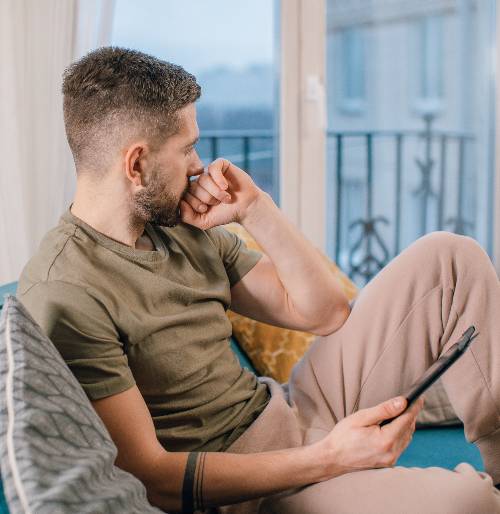
Setting boundaries and calling people out can look different depending on the kind of dynamic you have with the person:
Here are some examples:
- “Hey, are you making me feel bad for having to take care of myself first?”
- “Why are you guilt-tripping me again!?”
- “You are trying to make me feel bad for that, but ____ is your responsibility.”
- “Do you notice when you do that?”
- “Are you open to working on that?”
If you're afraid of getting rejected, left out, or abandoned...
If you need constant validation from others, your inner child’s alarm for impending rejection is probably overactivated. It sounds a bell for situations where there is, in reality, potential rejection and for neutral circumstances. For instance, this alarm may sound when others are busy and don’t immediately respond to your text. Or, they need personal space that isn’t a specific reaction to you as an individual. In this case, you may want to practice distinguishing between these nuances in each situation.
If your inner child wound is related to neglect...

Are you attracting people who don’t appreciate you or make you feel seen? Or are you unconsciously enacting this neglect in situations by not voicing yourself? And therefore, as a self-fulfilling prophecy, feel unseen?
In this case, maybe your inner child needs to be cared for by setting boundaries, letting toxic people go, or speaking up more about their opinions, needs, and wants.
If you have been overloooked, dismissed, and hurt because of racialized aggression, what are some ways that you can see support from and connect with people who have experienced similar struggles?
If you have been neglected emotionally or physically, you may also struggle with caring for yourself. If this is the case, how can you take care of your mind, body, energy levels, emotions, and soul? What are some passions and hobbies your inner child has that you can start cultivating and pursuing?
When following these tips become a short-term fix..
Know this, without processing and working through the trauma(s) that your inner child has experienced, these tips may just be short-term bandages on long-term wounds.
Schedule a consultation with our vetted therapists to address the roots of your inner child wounds.
- Limited weekday evenings available right now for DC, NY & NJ
- FREE 15 minute consultation
- In-depth therapy that addresses more than just symptoms
- Trained in Evidence-Based Practices
3 Common emotional barriers to therapy if you have inner child wounds
Here are 3 common hesistances about starting therapy we’ve heard from clients…
"I don't want to relive it. It might be too much..."
Maybe you’re afraid of being retraumatized. If so, it’s understandable. Imagining yourself in therapy can seem overwhelming, especially if you’ve experienced anxiety and depression from inner child wounds. The unpleasant truth is that these symptoms are, in fact, part of the ways you are already unconsciously reliving what happened.
There is a difference between reliving the trauma alone and getting professional help. A therapist will guide you through processing the trauma in a way that moves you toward healing.
Moreover, they will support you in healing at your own pace. A part of what that means is that you are in control of what you want to talk about, how much of it you want to discuss, and if you even want to discuss it at all at any given moment. Having that control over the pace and speed of treatment is crucial, considering that many people who have been traumatized were left powerless and helpless when it happened.
Therapy helps you process the experience in a way that gives you power and control. Therapy can also empower you with mental, emotional, physical, and interpersonal tools and coping strategies you can use to move forward from the past and live meaningfully in the present.
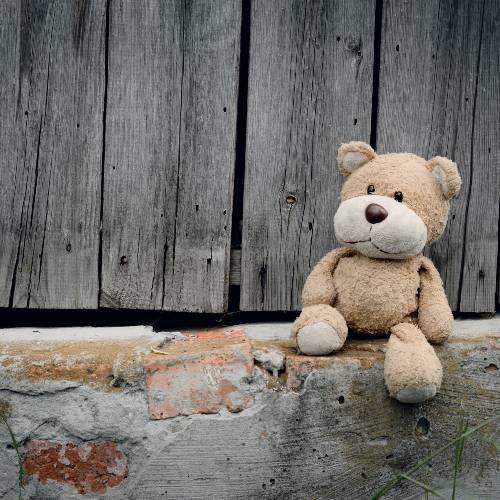
"I want to leave the past in the past. I'm not interested in blaming people."
The past is relevant insofar as it comes up in the present. Whatever you are experiencing in the present is there for a reason. Ignoring it may ease the pain at the moment, but it isn’t helpful in the long term.
By understanding the pains and internalized messages we receive from our family, community, and society, we now have a context to understand our struggles. Are you repeated intergenerational patterns? Is there internalized racial trauma?
Blaming keeps us in a victimized state without taking responsibility for our healing journey. Therapy empowers us to take responsibility for our present while understanding our inner child’s experiences.
If we are unaware of how our present thoughts, feelings, and beliefs are shaped by the past, we may unknowingly continue to relive the past in the present. Through therapy, you can understand the meaning of your difficulties and how they’ve come to be so that you can move forward in the present and make informed choices.
"Maybe it's all in my head, and I'm just sensitive."

The tricky part about inner child wounds is that it’s often unseen. There isn’t a scar – a physical one at least – we can point to. So, when we experience these internal struggles, it can be easy to dismiss, doubt, or question ourselves. There’s no’ evidence’ of this being a wound we need to tend to.
Moreover, we can easily take in specific messages that we may have heard before: “You’re just trying to get attention,” “It’s all in your head. Get over it,” or “You’re probably just overthinking.”
To that, consider the possibility that you’re not overthinking. Could you be gaslighting yourself? It may not be just ‘in your head.’ A part of the process of therapy is to develop the capacity to listen to your emotions and your internal experience, to learn more about yourself, and to address the underlying pains, needs, and wants. Otherwise, how can we treat or address a wound we can’t recognize or name? An unhealed inner child wound will continue to fester and cause pain.
In conclusion
Our inner child is a precious part of ourselves that requires healing if we’ve experienced attachment injuries or other childhood traumas. As children, we were vulnerable and dependent on those around us to nurture us physically and emotionally.
Do you think you’ve experienced any of these – racial trauma, immigration trauma, intergenerational trauma, as well as relational, physical, or sexual trauma? These wounds and attachment injuries influence our expectations and assumptions about ourselves, others, the world, and the possibilities in life. Nonetheless, these painful experiences and beliefs may not readily come to the surface in our conscious minds. Instead, if left unprocessed, we may unconsciously fall into toxic dynamics such as the drama triangle.
Inner child work in psychodynamic therapy involves addressing unresolved childhood trauma so we can be empowered to live more freely and fully in the present.
If you’re interested in getting started in therapy, here are the next 3 steps.
ABOUT THE AUTHOR
Chin Priscilla
Priscilla is a therapist, psychoanalyst, and the practice owner of Imagine Emotional Wellness, a culturally responsive online therapy practice in New York, New Jersey, and Washington DC.

